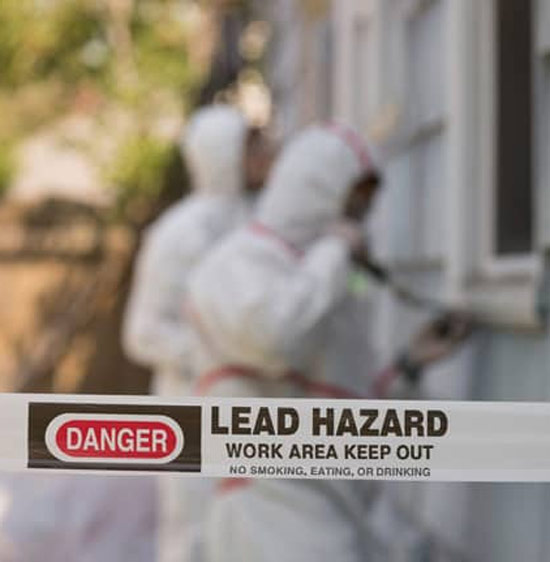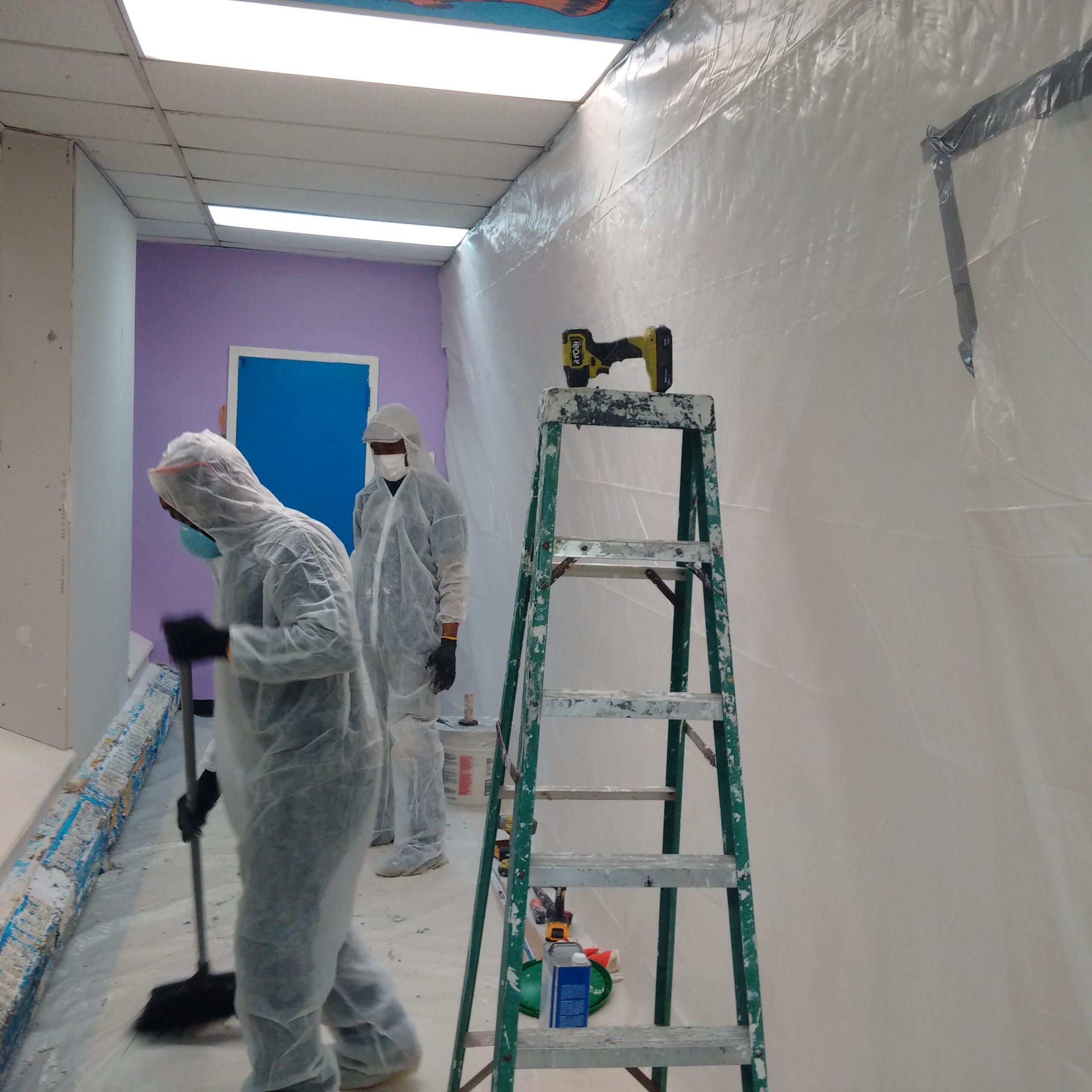Relied On Lead Paint Removal Company-- NYC's Premier Lead Abatement Service
Relied On Lead Paint Removal Company-- NYC's Premier Lead Abatement Service
Blog Article
Step-by-Step Process for Effective Lead Offense Remediation
Dealing with lead violations requires a careful and organized method to make certain both safety and governing compliance. The trip begins with the precise detection and assessment of contamination sources, using sophisticated analysis tools. Following this, adherence to government and state laws is extremely important to creating an efficient removal plan. Such a strategy needs to detail the particular techniques and timelines for activity. The actual removal requires competent employees to apply these strategies while purely complying with safety and security procedures. What takes place after the removal is completed? The solution exists in understanding the important post-remediation approaches that ensure long-term safety and security and neighborhood well-being.

Discovery and Evaluation
Discovery and analysis are vital actions in the removal of lead violations. To ensure an effective remediation process, it is necessary to perform a detailed assessment of the environment where prospective lead exposure exists. The first stage of discovery entails identifying sources of lead contamination, which can be discovered in paint, pipes, soil, and dust. Making use of advanced analysis devices such as X-ray fluorescence (XRF) analyzers and atomic absorption spectroscopy (AAS) can provide accurate dimensions of lead concentrations.
This includes evaluating the degree and intensity of contamination, as well as identifying populaces at risk, particularly youngsters and pregnant women. The collected information need to be carefully documented to support the growth of an efficient removal technique.
Furthermore, it is essential to focus on areas with the highest degrees of contamination and those that pose the greatest health risks. Efficient interaction with stakeholders, consisting of building proprietors, residents, and public health and wellness officials, is critical for making certain that all parties are notified regarding the findings and the subsequent steps required for removal. This first detection and evaluation stage prepares for a successful lead infraction remediation process.

Legal and Regulatory Conformity
Navigating the landscape of lawful and regulatory compliance is an essential element of effective lead infraction remediation. Compliance guarantees not just the safety of afflicted populaces however also the reputation and lawful standing of the company accountable for removal.
This includes careful documentation of all remediation tasks to demonstrate compliance. Failure to stick to these laws can result in severe penalties, consisting of hefty fines, lawful activity, and reputational damage.
Engaging lawful specialists specialized in ecological regulation can facilitate browsing these complexities. Regular training and certification for all personnel involved in the removal process are additionally necessary to make certain adherence to safety and governing requirements. By focusing on lawful and regulative conformity, organizations can successfully mitigate risks and achieve a successful remediation outcome.
Planning the Remediation
Properly intending the remediation of lead offenses begins with a thorough evaluation of the contaminated site. This data-driven approach ensures that remediation efforts are appropriately targeted and efficient.
Once the contamination is mapped, a threat evaluation should be performed to examine possible health and wellness risks to human beings and the atmosphere. Lead Violation Removal in NYC. This evaluation needs to consider variables such as direct exposure paths, population vulnerability, and ecological impacts. The understandings collected will create the basis for picking an ideal removal strategy
Subsequently, setting clear, attainable objectives for the remediation project is vital. These purposes need to align with governing criteria and stakeholder assumptions to ensure compliance and community approval. Developing a comprehensive remediation plan that outlines techniques, timelines, and resource allotment will facilitate a structured strategy to the clean-up process.
Furthermore, it is important to engage with stakeholders early and maintain clear interaction throughout the preparation stage. This consists of educating local communities, obtaining required authorizations, and coordinating with regulative companies to make certain all legal and procedural demands are satisfied. A well-crafted remediation plan not just resolves the contamination properly but additionally develops trust fund and teamwork among all parties entailed.
Performing the Remediation
With a well-structured remediation plan in position, the emphasis shifts to the real execution of the removal activities. This phase entails activating the needed resources, including proficient personnel, customized devices, and high-quality products. Begin by plainly defining duties and duties to guarantee liability and smooth coordination among group members.
This consists of setting up containment areas to avoid lead dirt and debris from dispersing, as well as employing air purification systems to maintain air investigate this site high quality. Utilize methods such as damp scuffing, chemical removing, or encapsulation, depending on the intensity and place of the contamination.
Throughout the removal process, conduct routine evaluations and air quality monitoring to ensure conformity with regulative requirements. Efficient communication with stakeholders, consisting of homeowner and residents, is important to maintain them educated of progression and any unforeseen growths. By diligently complying with these steps, the remediation tasks can be carried out efficiently and properly, inevitably mitigating lead hazards.
Post-Remediation Methods
Post-remediation strategies play a critical role in guaranteeing the long-term success of lead infraction removal initiatives. These strategies incorporate ongoing tracking, maintenance, and area education to stop future lead exposure and make certain a risk-free environment.
First, routine tracking is vital. This includes periodic testing of the formerly impacted locations to ensure that lead levels remain within secure limits. Residential or commercial property proprietors should establish a routine for these tests, preferably in cooperation with certified ecological professionals.

Third, educating the neighborhood plays a crucial function in maintaining the advantages of removal. Homeowners and building supervisors must be notified concerning the dangers of lead direct exposure and the most effective methods for keeping a lead-safe setting. Workshops, informative pamphlets, and neighborhood meetings can be effective tools for disseminating this info.
Final Thought
Effective lead infraction remediation needs an extensive, methodical approach encompassing discovery and assessment of dig this contamination, adherence to legal and governing standards, careful planning, and effective execution of removal efforts. Post-remediation strategies, consisting of constant monitoring and neighborhood education and learning, are necessary to maintain a lead-safe atmosphere. Partnership with environmental experts guarantees recurring compliance and defense of public wellness. This systematic procedure underscores the value of thoroughness and caution in dealing with and mitigating lead contamination.
Report this page